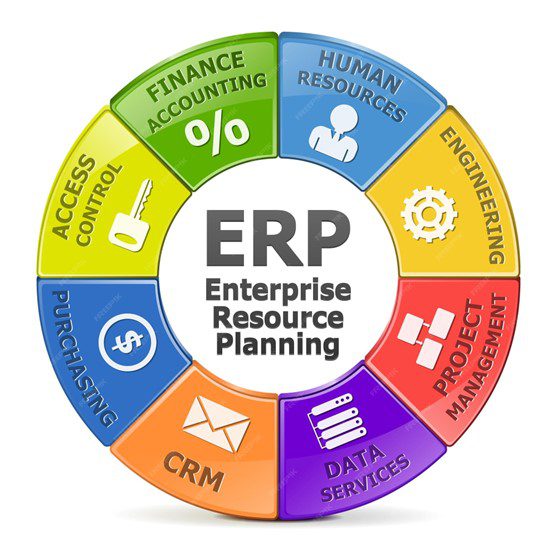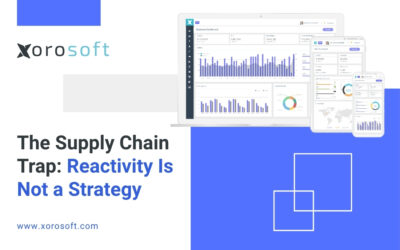
Introduction to Workflow Automation in XoroERP
In today’s fast-paced business world, efficiency is the key to success. As companies strive to streamline their processes and increase productivity, workflow automation has become an essential tool. XoroERP, an advanced ERP system developed by Xorosoft, offers a comprehensive solution for businesses looking to automate their workflows and improve overall efficiency.
The importance of Key Performance Indicators (KPIs) in measuring workflow automation success
When it comes to measuring the success of workflow automation in XoroERP, Key Performance Indicators (KPIs) play a crucial role. KPIs provide businesses with measurable metrics that can help them evaluate the effectiveness of their automation efforts. By tracking and analyzing these KPIs, companies can identify areas for improvement and make data-driven decisions to optimize their processes.
Understanding the XoroERP system and its features
Before diving into the essential KPIs for measuring workflow automation success in XoroERP, it is important to have a good understanding of the system itself. XoroERP is a powerful ERP solution that integrates various modules to streamline business operations. From inventory management to accounting processes, XoroERP offers a range of features designed to automate and optimize workflows.
Key Performance Indicator #1: Efficiency of inventory management
Efficient inventory management is essential for any business, and XoroERP excels in this area. By automating inventory tracking, businesses can reduce the risk of stockouts, prevent overstocking, and improve overall supply chain efficiency. Key metrics to measure the efficiency of inventory management in XoroERP include inventory turnover ratio, order fulfillment cycle time, and stock accuracy.
Inventory turnover ratio measures how quickly a company sells its inventory and replaces it with new stock. A higher turnover ratio indicates efficient inventory management. Order fulfillment cycle time measures the time it takes for an order to be processed and delivered to the customer. A shorter cycle time signifies higher efficiency. Lastly, stock accuracy measures the precision of inventory records in XoroERP, ensuring that the system reflects the actual stock levels accurately.
Key Performance Indicator #2: Accuracy of accounting processes
Accurate accounting is vital for businesses to maintain financial health and make informed decisions. XoroERP offers robust accounting features that automate various processes, such as invoicing, expense tracking, and financial reporting. Key metrics to measure the accuracy of accounting processes in XoroERP include accounts payable and accounts receivable accuracy, financial statement reconciliation, and error rates.
Accounts payable and accounts receivable accuracy measure the precision of recording and tracking vendor and customer transactions. Financial statement reconciliation ensures that the financial data in XoroERP matches external sources, such as bank statements. Lastly, error rates track the occurrence of accounting errors, highlighting areas that require attention and improvement.
Key Performance Indicator #3: Reduction in manual data entry
One of the primary benefits of workflow automation in XoroERP is the reduction in manual data entry. Manual data entry is prone to errors and can be time-consuming, hindering operational efficiency. By automating data entry processes, businesses can save time, minimize errors, and improve overall productivity. Key metrics to measure the reduction in manual data entry include data entry time, error rates, and employee feedback.
Data entry time measures the time it takes for employees to input data manually into XoroERP compared to the automation process. Lower data entry time indicates higher efficiency. Error rates track the occurrence of data entry errors, highlighting the effectiveness of automation. Employee feedback provides valuable insights into the user-friendliness and efficiency of automated data entry processes.
Key Performance Indicator #4: Streamlining communication and collaboration
Efficient communication and collaboration are vital for seamless workflow automation. XoroERP offers features that facilitate communication and collaboration among team members, departments, and external stakeholders. Key metrics to measure the streamlining of communication and collaboration in XoroERP include response time, document sharing, and feedback loops.
Response time measures the time it takes for team members to respond to inquiries or requests within XoroERP. Faster response times indicate improved communication efficiency. Document sharing tracks the ease and speed of sharing important documents within XoroERP, reducing the need for external platforms or email. Feedback loops measure the effectiveness of communication channels and processes, ensuring that information flows smoothly between stakeholders.
Key Performance Indicator #5: Cost savings and ROI analysis
Ultimately, workflow automation in XoroERP should deliver tangible financial benefits to businesses. Cost savings and Return on Investment (ROI) analysis are essential KPIs to measure the financial impact of automation. Key metrics to measure cost savings and ROI in XoroERP include reduced labor costs, decreased error-related expenses, and increased revenue.
Reduced labor costs can be measured by comparing the number of hours spent on manual tasks before and after automation implementation. Decreased error-related expenses track the reduction in financial losses caused by errors in manual processes. Increased revenue measures the impact of automation on sales and overall business growth.
How to track and measure these KPIs in XoroERP
Tracking and measuring these essential KPIs in XoroERP is made easy through the system’s advanced reporting and analytics capabilities. XoroERP provides comprehensive reports and dashboards that allow businesses to visualize and analyze their performance in real-time. By customizing these reports to focus on the selected KPIs, businesses can gain valuable insights into their workflow automation success and make data-driven decisions for further optimization.
Benefits of implementing XoroERP for workflow automation
Implementing XoroERP for workflow automation offers numerous benefits to businesses. By streamlining processes, reducing manual tasks, and improving overall efficiency, companies can experience increased productivity, reduced operational costs, and improved customer satisfaction. XoroERP’s robust features and user-friendly interface make it an ideal solution for businesses of all sizes, enabling them to unlock efficiency and achieve their goals.
Conclusion: Unlocking efficiency with XoroERP and KPIs
In conclusion, workflow automation is essential for businesses looking to stay competitive and succeed in today’s fast-paced environment. XoroERP, with its comprehensive features and advanced reporting capabilities, provides the perfect solution for automating workflows and unlocking efficiency. By tracking and measuring the essential KPIs discussed in this article, businesses can evaluate their workflow automation success, identify areas for improvement, and make data-driven decisions to optimize their processes. To experience the power of XoroERP firsthand, book a demo with Xorosoft today and unlock efficiency in your business.









